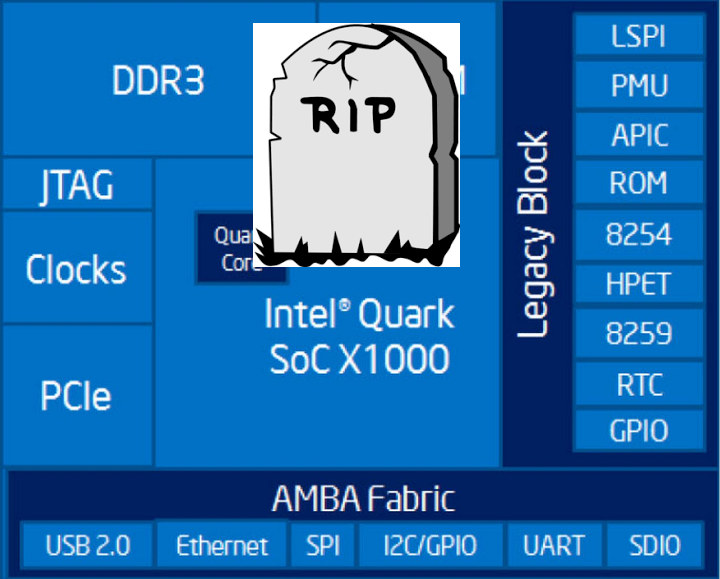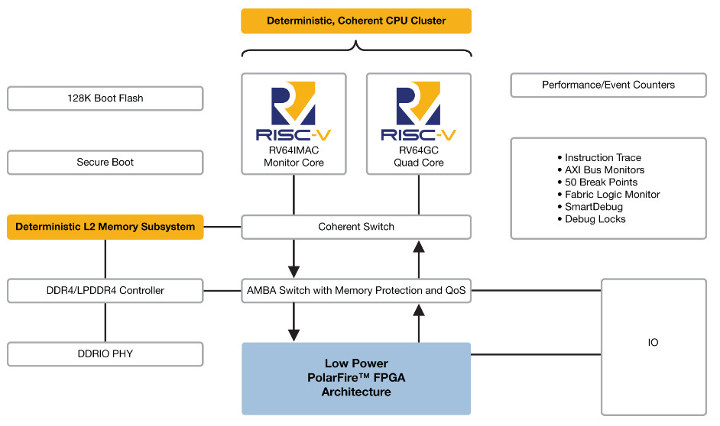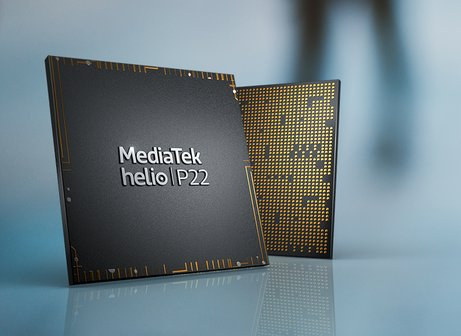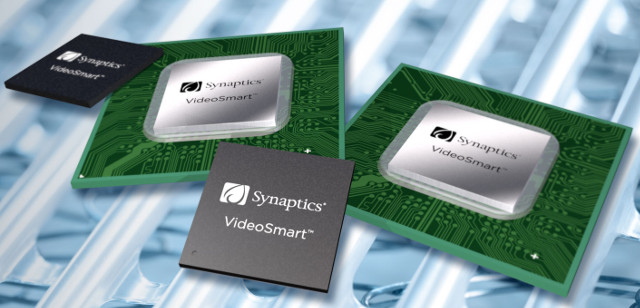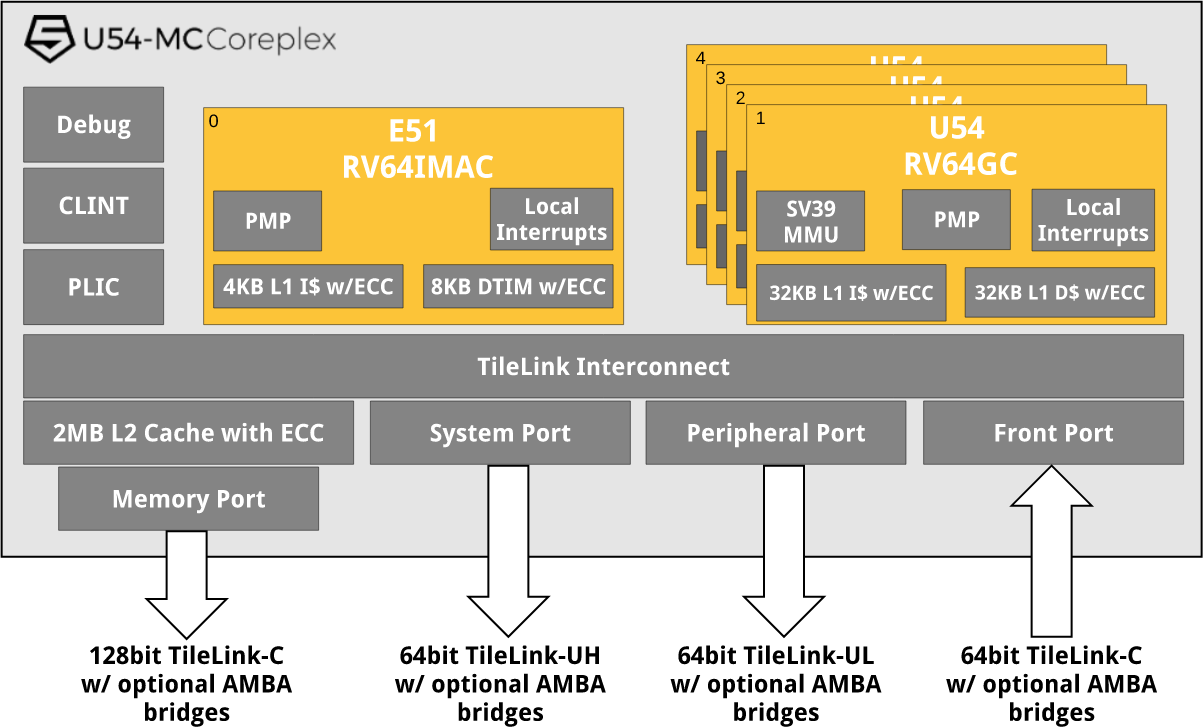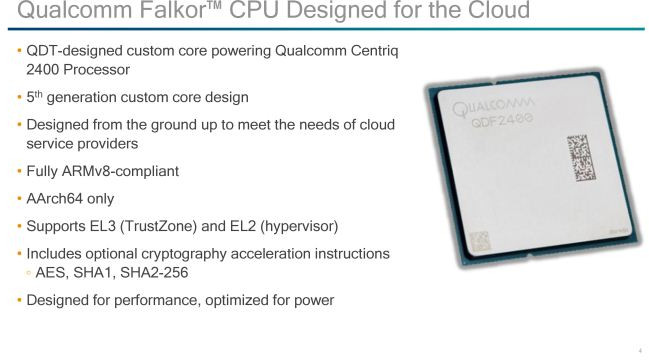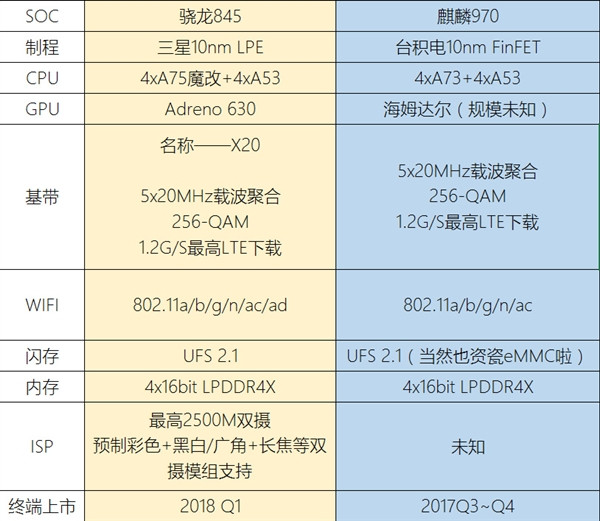I had completely forgotten about Intel Quark SoCs and MCUs found in development kits and modules such as the Arduino 101 board or Intel Curie module. Last time I heard about those chips, Intel had just discontinued several boards including the two aforementioned products, and I just assumed the Quark chips had quietly reached end-of-life as well. But actually those will still be available for a bit longer, with Intel having just issued a product change notification for the discontinuance & end of life of the following parts: Intel Quark SoC X1020D Intel Quark SoC X1000 Intel Quark SoC X1010 Intel Quark SoC X1021D Intel Quark SoC X1001 Intel Quark SoC X1011 Intel Quark SoC X1020 Intel Quark SoC X1021 Intel Quark Microcontroller D1000 Intel Quark Microcontroller D2000 Intel Quark SE C1000 Microcontroller Intel Quark Microcontroller D2000 Intel Quark SE C1000 Microcontroller In case you have a product based one […]
MicroSemi Introduces PolarFire FPGA & RISC-V SoC
In the past we’ve covered SoCs comprised of Arm cores and FPGA fabric via Xilinx Zynq-7000 series SoCs and Zynq UltraScale+ series MPSoCs, respectively featuring up to two Arm Cortex A9 cores, and up to four Cortex A53 cores. MicroSemi has now announced an alternative, not based on Arm cores, but instead based on SiFive U54-MC RISC-V cores combined with PolarFire FPGA fabric. PolarFire FPGA RISC-V SoC key features & specifications: FPGA – Microsemi PolarFire FPGA Processor Cores – Up to 4x SiFive U54-MC RISC-V cores clocked at up to 1.5GHz (performance similar to Cortex-A35 cores); 28nm process Deterministic Coherent Multi-core CPU Cluster Deterministic L2 Memory Subsystem System Memory I/F – Integrated DDR4/LPDDR4 Controller and PHY Storage – Secure Boot, 128K Boot Flash Debug capability Rich I/Os Low Power – Low static power; power optimized transceivers, up to 50% lower power compared to SRAM based FPGAs So we don’t have […]
MediaTek Helio P22 SoC for “Mid Range Premium” Smartphones Relies on 12nm Manufacturing Process
MediaTek already has plenty of Arm Cortex A53 processors in their portfolio, but with MediaTek Helio P22 they’ve now added another one. One of the selling point of the new processor is that it is manufactured using a 12nm manufacturing process, just like the recently announced Helio P60 SoC, which better performance for the similar power consumption thanks to a higher CPU clock (2.0 GHz). MediaTek Helio P22 specifications: Processor – 8x Arm Cortex A53 @ up to 2.0 GHz GPU – Imagination PowerVR GE8320 GPU @ up to 650MHz System Memory – Up to 4GB LPDDR3 @ 933MHz, up to 6GB LPDDR4x @ 1600 MHz Storage I/F – eMMC 5.1 Connectivity Cellular Technologies – Carrier Aggregation (CA), CDMA2000 1x/EVDO Rev. A (SRLTE), FDD / TDD LTE, HSPA + Specific Functions -TAS 2.0, HUPE, IMS (VoLTE\ViLTE\WoWi-Fi), eMBMS, Dual 4G VoLTE (DSDS), Band 71 LTE Category – Cat-4, Cat-7 DL / Cat-13 UL GNSS – […]
ZiP (zGlue Integration Platform) Enables the Design & Manufacturing of Low Cost Custom Chips
When I first started to read about zOrigin on Crowdsupply, I was not really impressed. Meh… Yet another Bluetooth LE fitness tracker with a few sensors, and an Android app. But as I read further, I found out the interesting part was inside the device: ZGLZ1BA, a custom chip manufactured using ZiP (zGlue Integration Platform) chip-stacking technology, which produces something similar to SiP (System-in-Package) but at a much lower cost and manufacturing lead time. But let’s have a look at zOrigin tracker first, which acts as a demonstration / evaluation platform for ZiP technology. Key specifications & features: “SoC” – ZGZL1BA ZiP with Dialog Semiconductor DA14585 16MHz 32-bit ARM Cortex M0 MCU with BLE Analog Devices AD8233 Heart Rate Analog Front End (AFE) Macronix MX25R4035F 2 Mbit Flash Memory MCube MC3672 Accelerometer Maxim MAX77734 Power Managment IC (PMIC) SiTime SIT1552 32 kHz Oscillator Vishay SI8466EDB MOSFET 30 passive components Package […]
Synaptics Introduces VideoSmart BG5CT 4K HDR Multimedia Video Processor for Set-Top Boxes
Marvell used to design Media SoCs running Android TV such as ARMADA 1500 Ultra (aka BG4CT). That part of Marvell business has very recently been sold to Synaptics, which has just unveiled VideoSmart BG5CT multimedia SoC with 4K “Advanced” HDR video processing for the set-top-box market. The BG5CT is said to be pin-to-pin compatible with BG4CT Android TV SoC, features a quad core ARM CPU @ 1.6 GHz with 15K DMIPS, an Imagination PowerVR Series8XE GE8310 GPU, and a security engine enabling secure boot, Trusted Rendering Path, full TrustZone, and video watermarking carrier-grade security making it suitable for Pay TV operators and set-top-box manufacturers. Synaptics’ Qdeo video processing technology adds 4K “Advanced HDR” – including HDR10, HLG, Dolby Vision, and Technicolor HDR, among user video processing technology. The company did not provide that many details, but BG5CT appears to mostly add HDR support compared to BG4CT, and replace Vivante GC7000 GPU by […]
SiFive U54-MC Coreplex is the First Linux Ready RISC-V based 64-bit Quad-Core Application Processor
We first covered SiFive when they unveiled their open source Freedom RISC-V SoCs. Since then, they moved away from open source for their customizable IP, since their customers did not require fully open source designs, but kept releasing more RISC-V cores such as 32-bit E31 Coreplex & 64-bit E51 Coreplex, as well as offering their one-time fee pricing without recurring royalties, contrary to what some competitors – such as Arm – are doing. The company has now just announced U54-MC Coreplex quad core real-time capable application processor with support for full featured operating systems such as Linux. U54-MC Coreplex main specifications / features: Fully compliant with the RISC-V ISA specification 4x RV64GC U54 Application Cores 32KB L1 I-cache with ECC, 32KB L1 D-cache with ECC 8x Region Physical Memory Protection 48x Local Interrupts per core Sv39 Virtual Memory support with 38 Physical Address bits 1x RV64IMAC E51 Monitor Core 4KB […]
Qualcomm Provides Details about 64-bit ARM Falkor CPU Cores used in Centriq 2400 Server-on-Chip
Qualcomm officially announced they started sampling Centriq 2400 SoC with 48 ARMv8 cores for datacenters & cloud workloads using a 10nm process, but at the time the company did not provide that many details about the solution or the customization made to the CPU cores. Qualcomm has now announced that Falkor is the custom CPU design in Centriq 2400 SoC with the key features listed by the company including: Fully custom core design – Designed specifically for the cloud datacenter server market, with a 64-bit only micro-architecture based on ARMv8 (Aarch64). Scalable building block – The Falkor core duplex includes two custom Falkor CPUs, a shared L2 cache and a shared bus interface to the Qualcomm System Bus (QSB) ring interconnect. Designed for performance, optimized for power 4-issue, 8-dispatch heterogeneous pipeline designed to optimize performance per unit of power, with variable length pipelines that are tuned per function to maximize […]
Qualcomm Snapdragon 845 Octa-core Processor To Feature ARM Cortex A75 Cores (Reports)
According to reports from China, Qualcomm’s next application processor (or rather mobile platform) will be Snapdragon 845, and if accurate, the comparison table below between the Snapdragon processor and Hisilicon Kirin 970 SoC shows the former will be powered by some customized (魔改) version of yet-to-be announced ARM Cortex 75 cores. Snapdragon 845 octa-core processor will be manufactured using Samsung 10nm LPE processor, come with four custom Cortex A75 cores, four Cortex A53 cores, an Adreno 630 GPU, and an LTE X20 modem supporting LTE Cat 18 for up to 1.2 Gbps download speed. Other features like 802.11ad (High bandwidth, short range WiFi), UFS 2.1, and LPDDR4X were already found on earlier model. I’ve been unable to find further details about ARM Cortex A75 right now, and we have to wait until ARM Techcon 2017 before getting more details. Mobile phones powered by Snapdragon 845 are supposed to start shipping […]


